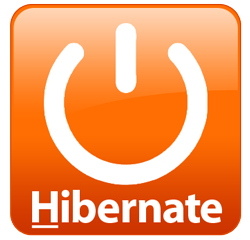|
I plan to add some recommended exercises to this site in the near future but until I do here is a really good and and well explained exercise to do before you train, or just during the day. The point is that it improves balance and proprioception in three dimensions. Three dimensional proprioception is critical since although our knees and ankles move most significantly in the anterior posterior plane we need strength, and more importantly quick automatic pretensioning reactions, in other planes in order to prevent knee and ankle sprains and strains. For those whose knees tend to drop inward when running, cycling or working out, this is also great since this will help you body build up appropriate strength, get used to firing the right muscles at the right time and understand where your limbs are in space in order to start to correct or limit that issue. This exercise will work a surprising range of muscles quite hard. We've talked about muscles around the knees and ankles but think about what is going on at the pelvis also.
No more spoilers, read Steve's blog and watch the video. It's not as easy as it looks, so take Steve's advice and perhaps try it holding onto a chair first. Click here
0 Comments
 Rheumatoid arthritis is an autoimmune disease that causes inflammation of the joints. It is the most common autoimmune disease of the joints and left untreated the uncontrolled inflammation not only causes pain but also bony remodelling of the joints, which can lead to deformation and disability. The condition often requires lifelong treatment with medications that are not without side-effects. A team of boffins (they look about 12 years old to me, I must be getting old) at Friedrich-Alexander Universitat in Erlangen, with the help of research from an international project, has discovered that a type of cell called innate lymphoid cells are instrumental in the resolution of inflammation. Furthermore, in patients with Rheumatoid Arthritis it appears that these cells become dormant, they, in effect, go into a state of hibernation. When they are awoken they put an end to the inflammatory process and the pain and destruction associated with it. The possibility of treatments which increase the numbers of innate lymphoid cells in future may lead to much better outcomes for patients with, not just rheumatoid arthritis but also potentially any condition based on chronic inflammation, these might include conditions as varied as Crohns disease and ulcerative colitis, psoriasis and even cirrhosis of the liver. Read the press release here  The body needs to find time to repair itself and schedules downtime so that structures can be restored to better function. Did you know that nostrils are periodically switched throughout the day and night, with one fully open and the other partially blocked in order that it can rest and repair from the fast moving particles you inhale? The intervertebral discs also have a repair cycle. When we lie down and take the weight off them, they decompress and fluid and nutrients are sucked in so that they are plumper by about 10% and we are actually measurably taller at the beginning as opposed to the end of the day by about 1.5-2cm. However, the rhythm is not just a response to our activity, scientists at the University of Manchester have discovered, there is an intrinsic diurnal rhythm in the DNA of the substance of the discs. Genes concerned with homeostasis (repair through the restoration of the balanced state) are switched on when we rest at night. It was found that chronic inflammation and ageing both reduced the ability of the disc tissue to respond to the circadian rhythms. Furthermore the loss of circadian rhythms led to accelerated deterioration of intervertebral disc tissue. Read more here Another team at University of Manchester, looking at the mechanisms behind the inflammation causing Rheumatoid Arthritis have found that the body also secretes natural anti-inflammatories (notably cryptochrome) to reduce inflammation during the night and again this is disrupted if we don't have a period of rest and darkness, read more here. So, what are the implications? The suggestion is that a regular sleep pattern, in darkness, is perhaps important to both mediate inflammation and to maintain disc health. The understanding that long term inflammation reduces the effectiveness of the circadian disc repair system means that a poorly regulated body clock could lead to a double whammy of decreased inflammatory suppression and of that inflammation then leading to a degraded intervertebral disc repair mechanism. There are some positives though; understanding how the body suppresses inflammation during the 'night' phase means we could potentially develop methods to artificially trigger that state, which could be especially useful for those with autoimmune conditions where inflammation is chronic and damaging, and understanding how ageing interferes with triggering nocturnal intervertebral disc repair may mean that we could find a way to reverse that also. In the meantime though, all in all, perhaps your grandparents were right when they exhorted you that 'early to bed, early to rise makes a man healthy, wealthy and wise'...well the first part, at least! |
Archives
February 2024
AuthorDamian is the principal osteopath at Vauxhall Village Osteopathy and Oval Osteopathy Categories
All
|


 RSS Feed
RSS Feed


